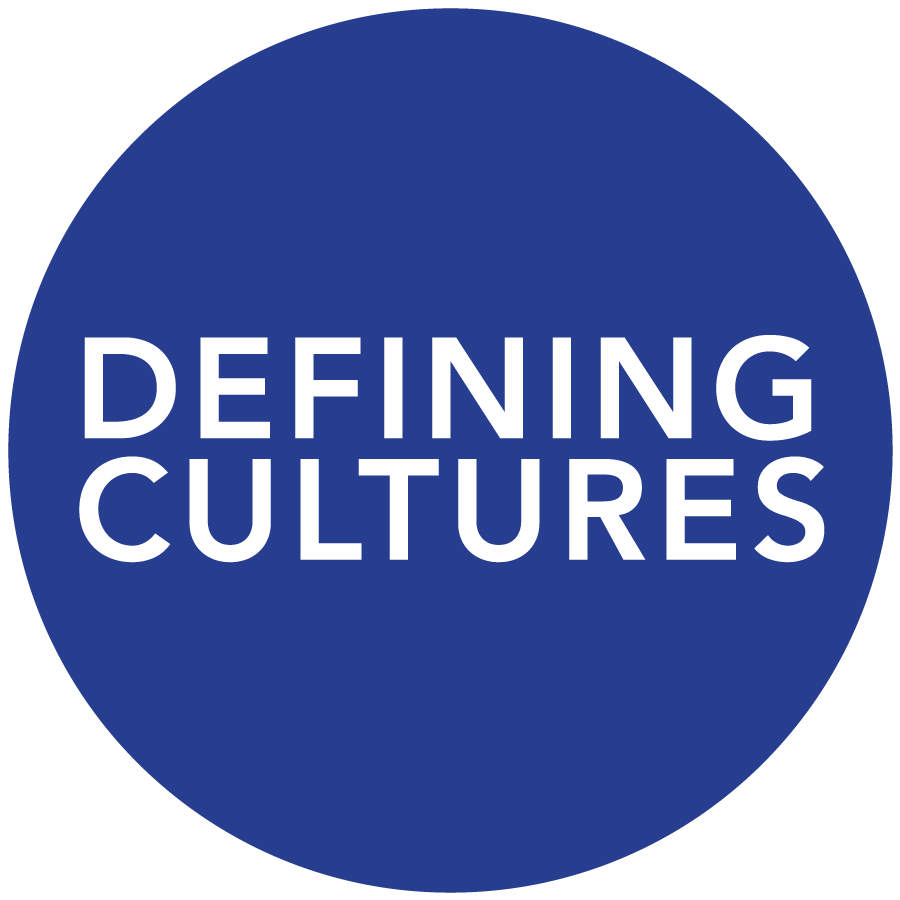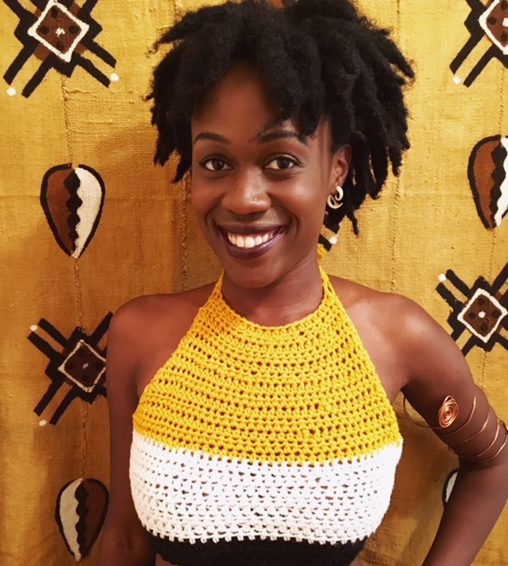
The Garifuna people. Have you ever heard of them? If not, it’s essential to learn who they are in order to understand the journey of Amani May: a proud Afro-Latina who is Garifuna.
Garifuna history in a nutshell:
In 1675, a slave ship carrying members of the Mokko people of Nigeria (now known as the Ibibio's) capsized. The survivors were able to make it to Bequia – the 2nd largest island of the country of Saint Vincent and the Grenadines. The indigenous population then took the Ibibo’s to the main island of Saint Vincent to intermarry with their population, for it was considered a taboo for the men in society to go unwed. So a new people developed: slaves from West Africa mixed with the indigenous (Island Caribs and Arawak) population = Garifuna.
Decades of on-again/off-again wars between the British and Garifunas*, the latter finally surrendered in 1797. From this defeat, the British separated the darker skinned Garifunas from the light skinned ones, and exiled the former…5,000 to be exact. The reason? The British feared that the “African” looking ones would eventually retaliate (similar to the slave revolts that were occurring across the Caribbean).
*The plural form of Garifuna is Garinagu, but the term Garifunas is popularly used as the plural form as well.
The Garifunas were banished…from their own damn land…to Roatán – an island off the coast of Honduras. But the voyage was extremely difficult, causing the exiled population to drop by half, or roughly 2,500 people. And once they got to Roatán, the small island was unable to support the new population. So the Garifunas were given the authority to settle across the Caribbean coast of Central America: Honduras, Belize, Guatemala and Nicaragua. As a result, the Garifuna culture is mixed with both Latino and African history.
A complex history, but I hope you get the gist.
Now…back to Amani. She’s a millennial, educated (Master of Social Work), charismatic, and has a story to tell. As a Garifuna, her journey towards cultural redemption and defying colorism has gotten her to a necessary place of self-acceptance.
What is your cultural background? Did you always grow up in New York?
I’m Garifuna, and I was born and raised in NY, living in Lower Manhattan for pretty much all of my life.
My mother was born in Guatemala and came to America when she was 15. My father was born in Texas, but was raised in Honduras from the age of 2 until he was a teenager. His mother is from Guatemala, and father is from Honduras. We are all Garifuna.
My parents met in high school in NY.
During childhood, did your parents talk openly about your background as a Garifuna, or did they want you to assimilate more into the American way of life?
My parents were very traditional. They were very opened about the culture – they spoke Garifuna in the house, we listened to the music and ate the food.
I was allowed to hang out with friends that were not a part of the community; but at the same time, I had to act like a Garifuna child – parents are always right, kids don’t have any say, and you have to do what your parents tell you to do. In that sense, my parents were very strict, but I’m very grateful for that due to the rough neighborhood I was raised in.
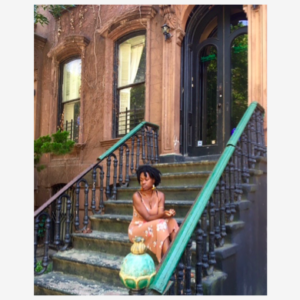
• “There was a lot of back and forth, and I really struggled with it. So after a while, I just stopped talking about being Garifuna.” •
- Amani on her reality in high school
What was the cultural makeup of your neighborhood in middle school?
It was a mix of all people of color. Not really many White people, but other cultures were represented in my school.
Tell me some of the struggles, if any, you had with your identity around 8th grade.
Thankfully, most of my friends were from all over the world. I had African, Filipino and West Indian friends. We never really talked about our culture, but we were always very accepting of each other.
I wasn’t uncomfortable being Garifuna or feeling alone, although I was the only Garifuna there. The only thing I really struggled around that time, was when I became hip to “colorism.” That’s when I was really bullied for being dark skin from dark skin males, who were doing most of the bullying. It was an African friend and I. She was from Senegal with a very beautiful complexion, but we were always the butt of the jokes. The kids would say 'Oh you’re too black' and call us 'twin darkness.'
It was very interesting because in the Garifuna culture, colorism does not exist. Whoever is the most popular person in school out there, it’s not because they’re light skin with long hair. It’s about who they are as a person. It’s not because they have a certain body type. Unlike out here [in the U.S.], you have to have a certain look. So I think that really made me aware of the differences.
Are Garifunas different shades or are majority of them on the darker side?
Majority of them are dark. A few are light, but that’s because they are mixed with the indigenous population. But even then, they tend to live in communities where there are darker Garifunas, not with the indigenous.
You hit 13 years old and start high school. You were battling colorism, but now have to throw into the mix, “Who am I?” How did you deal with that?
It was rough. I’m not even going to lie!
My school was predominately Latino (Dominican), but also had a large Black population as well. And besides me, there was only one other Garifuna I knew in my school. So what I dealt with was when people realized that I was Latina. I got into a lot of arguments with people and had a lot of statements thrown at me like:
'You’re too black to be Guatemalan.'
'You’re lying.'
'You’re too black, so prove that you’re Latina by speaking Spanish to me.'
And when the Latinos would make comments like that, I would think…'Ummm, well that’s interesting, because you’re Dominican and many Dominicans are Black too!” But they didn’t want to accept that. I would tell them: “Look at your hair…look at your skin…you’re Black too!” But some would respond: “No, I’m European.”
And from the Blacks: “Oh…so you’re trying to say that you’re Latina because you don’t want to identify with us?” My responses would be like:
'Noooo, I’m Black, I’m Black! You see me don’t you? But I also speak another language.'
'My mother’s an immigrant. I don’t have ancestors like you guys have here.'
There was a lot of back and forth, and I really struggled with it. So after a while, I just stopped talking about being Garifuna. It was very hard.
Did you ever talk to your parents about this battle?
I did, but they had a different high school experience and different upbringing. When they were in high school, they had other Garifunas in that school. Their siblings were in the same school. So they were surrounded by the Garifuna community.
After high school, what was next?
I went to the University of Delaware (UD). That was a culture shock because I never was really around White people growing up. 76% of the school body at UD was White. Being the outcast during my freshman year, it was a lot, but it allowed me to be more excited coming back to NY and appreciating it more.
You get a different set of questions, but that experience made me more proud and made me want to be more in touch with my culture.
Did UD have other Latinos there?
Not really. The Black community was 4% and Latino, 2%. It was a very small community of color, so because of that, we all created a community for ourselves. And within that, I started to educate myself about my culture and started educating other people about my culture as well.
So instead of being the high school Amani, where I shut myself down from talking about my culture. I was more like, 'Well, this is what I am, and if you don’t like it or understand it, that’s your fault.'
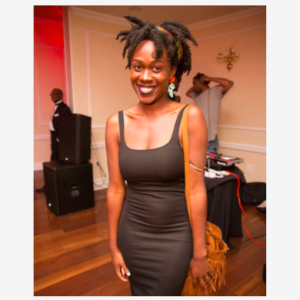
What year do you remember fully accepting your cultural identity?
Freshman year definitely!
What do you think sparked it? What made you say, 'You know what?…I need to accept me for who I am.'
When I made friends, especially in the Black community. Listening to their stories. It was a very pro-Black culture at UD.
There were times when I felt, I don’t have those same experiences...I’m here with y’all, but my history is a little bit different – my ancestors ended up somewhere else. So yes, I’m still a part of you, but there are differences. From there, that’s where the questions came. The questions came from a respectful place, not argumentative at all, because by that age we were mature and inquisitive.
When you went to college, did you know what you wanted to major in? Or did you figure it out once you got there?
I always knew I wanted to be a therapist because of what I went through growing up. Because of the bullying, due to colorism, I got counseling in middle school. And I remembered that my counselor was amazing, so I wanted to be like her. So by the time I got to college, I knew I wanted to become a Social Worker.
So after college, your identity is firm and you continued on the social work track. Tell me more about that time period.
Right after college, I went to graduate school for my Master of Social Work (MSW) at Hunter College in New York. Even then, I felt more in touch with my culture. I wrote papers about my culture, educated my peers about my culture. At that point, I was an adult and felt a lot more confident talking about my experiences and the experiences of my Garifuna people, even what we’re going through in NY.
And when I returned to NY after undergrad, I realized that a lot of people did know about my culture. I would have people say “Oh, I know somebody from Honduras that’s also black…you guys must be from the same place.” And I was like “Oh yea? Probably!” So coming back to that in NY was really nice.
During your MSW program, did you want to focus on a certain community?
I definitely wanted to work with communities of color…primarily Black communities. All of my internships, I worked in schools that were predominately Black. I also worked for non-profits that served the Black community. That’s where I really found my comfort level.
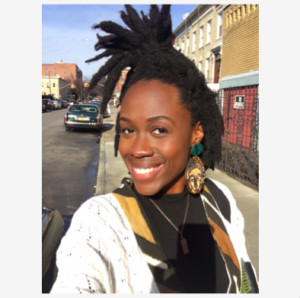
• “I am, in fact, beautiful despite being told differently by other people.” •
- Amani's advice to her 16-year-old self
Do you ever have any feelings of cultural guilt?
I definitely feel the guiltiest when I go back to Guatemala, because I see the kind of poverty that my community still lives in. The government doesn’t recognize Garifunas as part of the population, so not a lot has changed since we landed on the shores of Guatemala. A lot of us are still impoverished, there are not that many jobs and no real way of getting ahead in life out there.
So when I go back…to know that the only reason why my family was even able to leave was because one of us ended up getting their papers, worked hard, sent money back home, and eventually brought everyone. But not everyone can do that. That’s definitely hard for me to deal with.
But even out here in NY, my generation is struggling. A lot of us are living in poverty up here as well and not being able to move ahead and get ahead. It’s definitely due to the structural injustices in NYC, where schools are segregated. It’s impossible these days for low-income people. That’s what I struggle with the most. How I deal with it? it’s an internal thing.
But I am grateful for the opportunities I have. Because of where I am now, my kids will have even more.
I also go to more cultural events just to meet other Garifunas that are my generation or even older, just to talk to them about social and community issues. It’s been hard to meet people that have the same mindset as me, but I’m trying.
What are you up to these days?
I’ve been on a lovely break for a few months, but it will soon be over. I'm now excited to resume transforming lives!
Social work can take a toll on you if you’re not engaging in self-care, or if you’re not in a setting that you’re comfortable in, or one that is supportive. And that’s where I found myself.
As Black people, we’re always trying to climb up and out. But there is beauty in taking your time and really focusing on yourself, and healing, and growing. No one ever taught me that in school. It’s all self learned.
I’m a yes person, so if anyone asks me for anything, I’ll pretty much do it because I feel like I’m making someone else’s life a little bit easier. And I take pride in that, but in social work you have to start saying 'no.' That’s something I struggle with, and may continue to struggle with. Finding a balance is not easy to do, but I’m already doing better with that. So in knowing what jobs I want, and not just taking any job that comes, I have to accept the job only if it’s a good fit for me.
In the future, I would love to have my own practice and clientele. But in order to do that, I have to accumulate a certain amount of hours and get a special license…1st license just to practice, then a clinical license that allows you to have a private practice. That’s next for me…after the break.
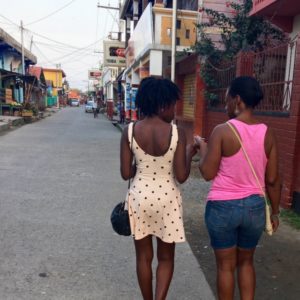
What advice would you give to your 16-year-old self?
Listen to that inner voice telling me: 'I am, in fact, beautiful despite being told differently by other people.' And, 'although adulthood is fun, being a kid is way more fun. So take your time and enjoy not having responsibilities.'
Oh yeah...'mom is always right!'
Chi Chi's notes: It would be a disservice not to point out colorism – the prejudice or discrimination against individuals with a dark skin tone, typically among people of the same ethnic or racial group. "The lighter the skin, the better" ideology is rampant around the world, and is not only an issue in Black communities. When I was living in Shanghai, and traveled to other countries in Asia, such as Korea and Japan, I remember having lengthy discussions with friends about this same issue: the preference for lighter skin. And to add fuel to the fire, their markets are saturated with beauty products that include bleaching agents.
Colorism is an "ism" that doesn't get enough attention. For this reason, we must all do our part in consciously countering our personal ideas of beauty, and do a better job at teaching our sons and daughters that beauty comes in all colors.
• • •
- Images courtesy of Amani May.
- This interview has been edited for brevity and clarity.
